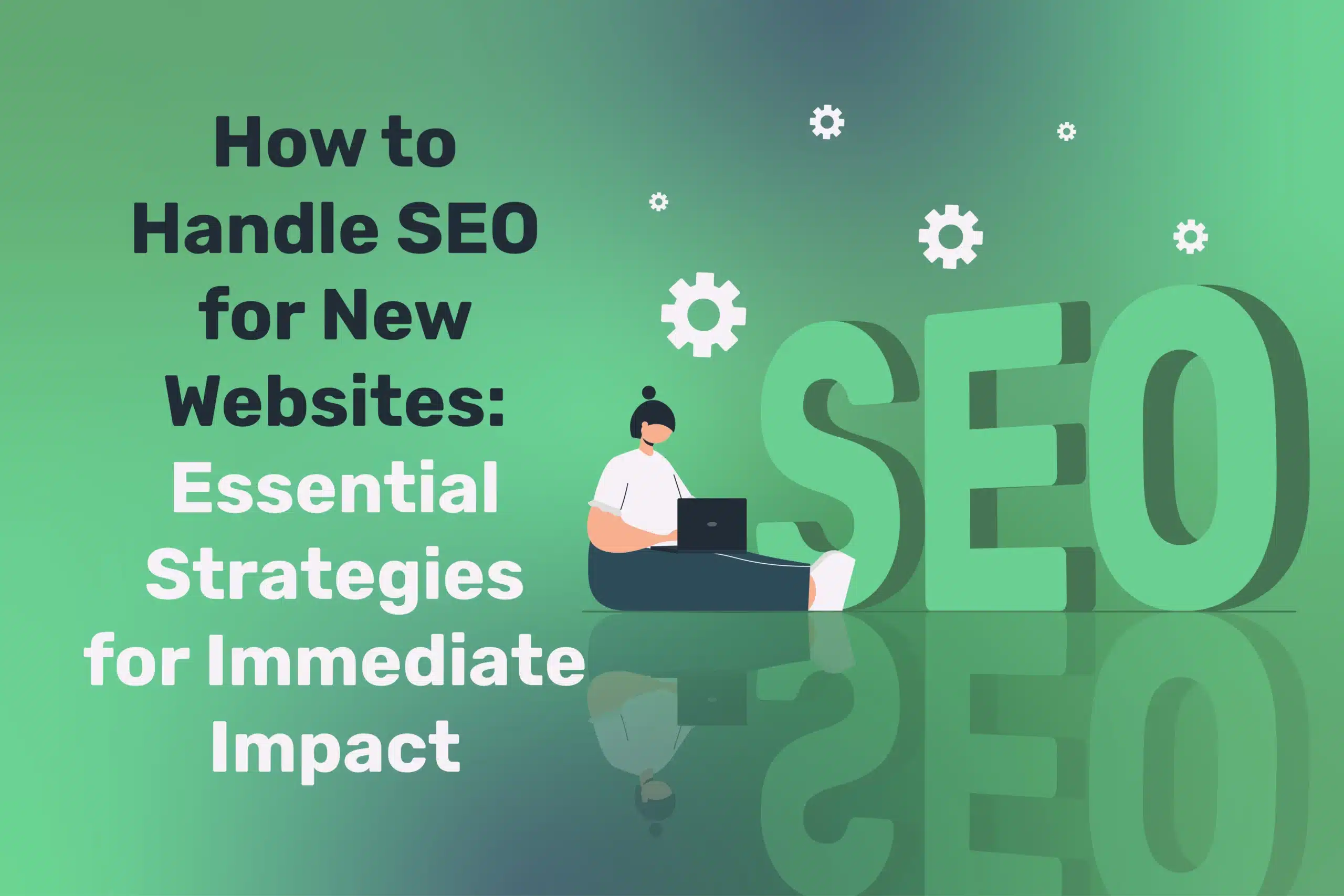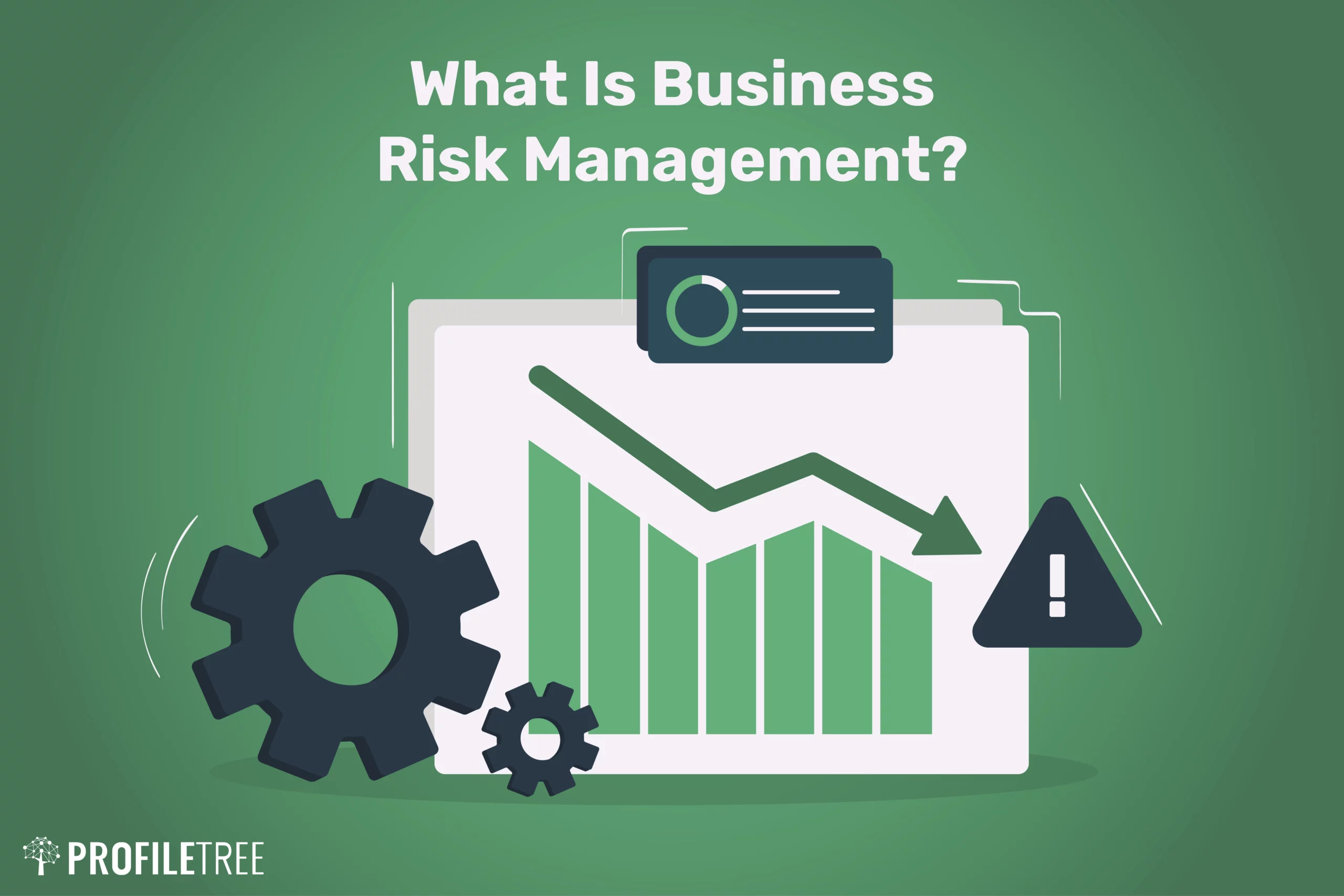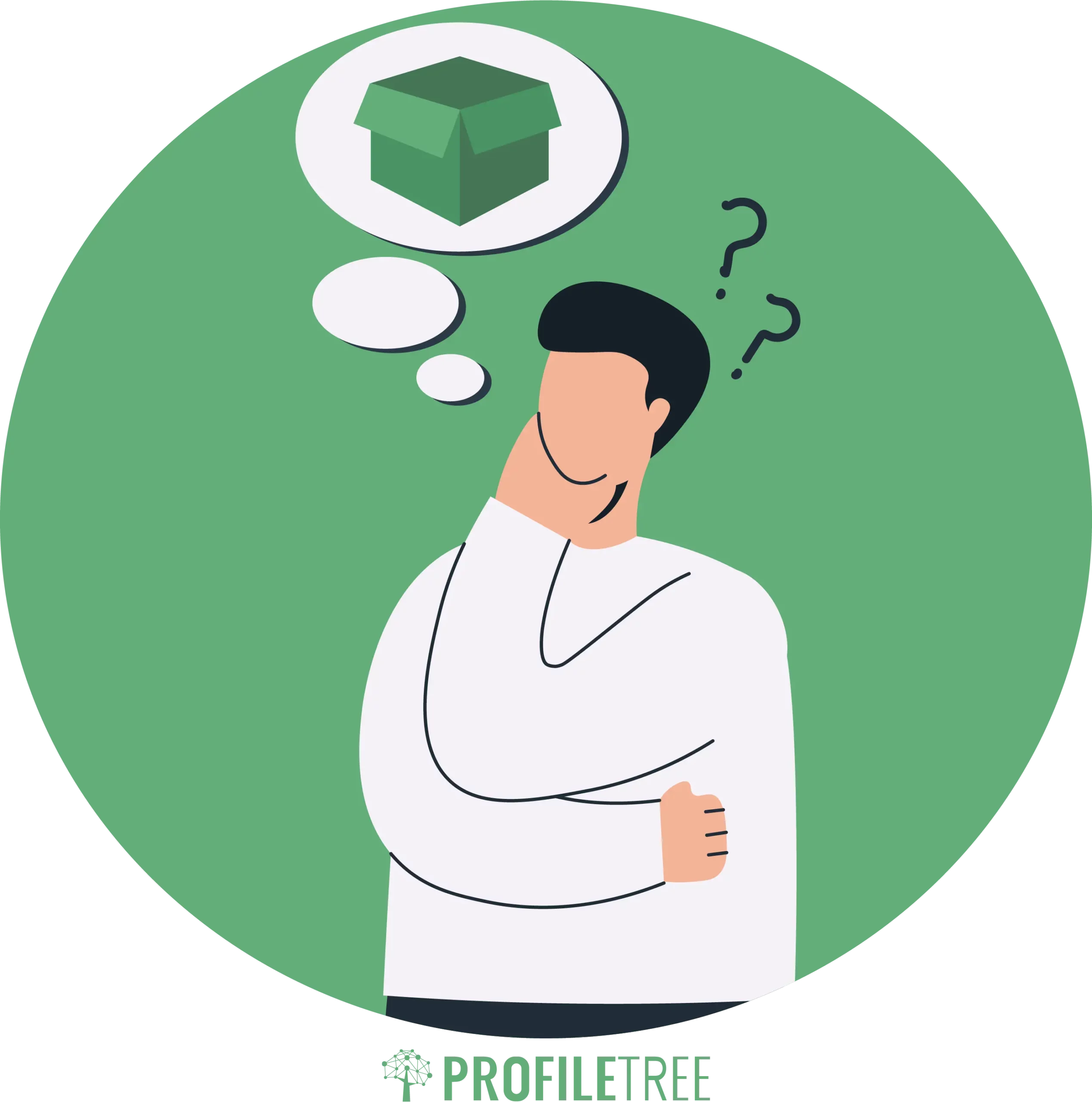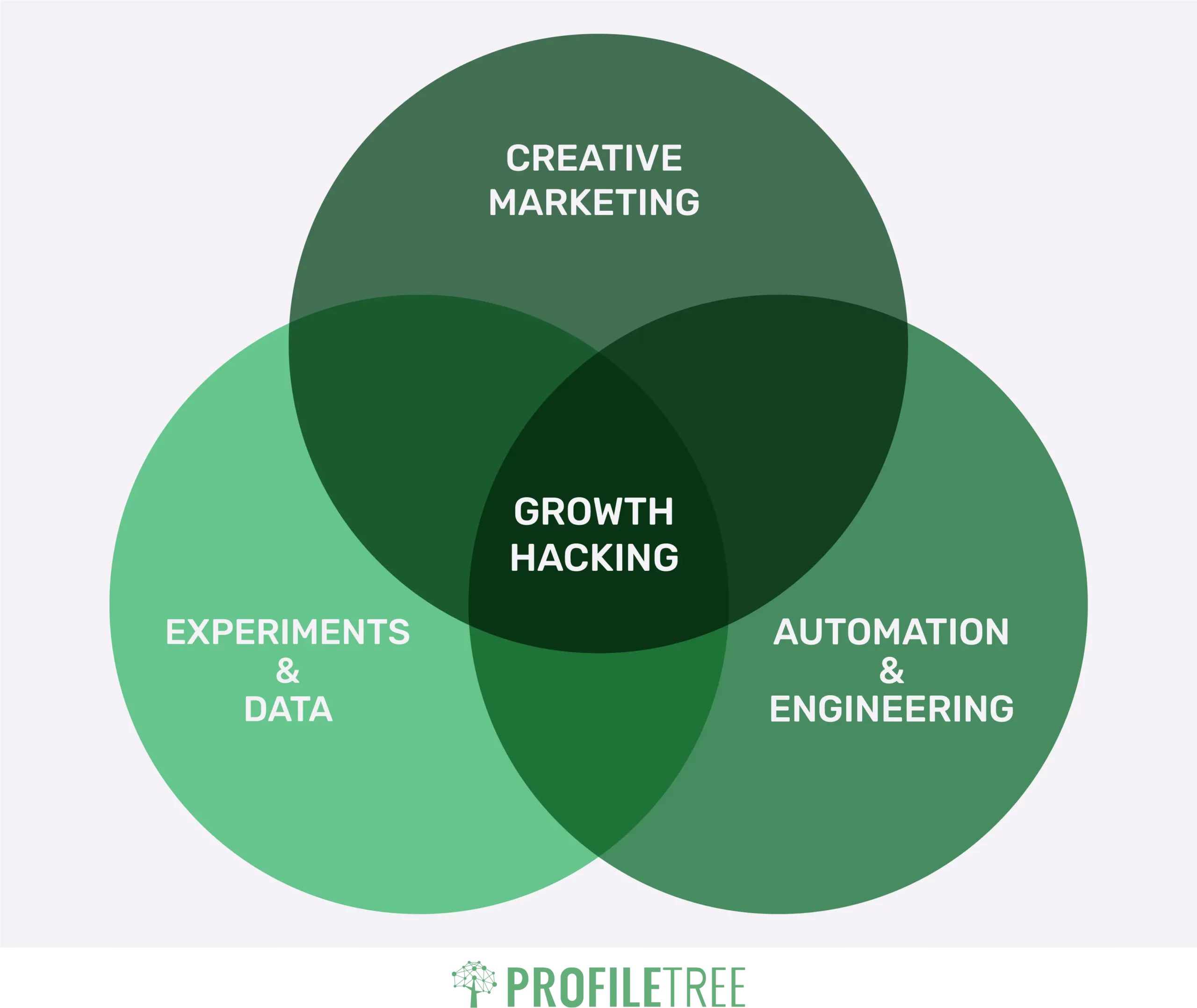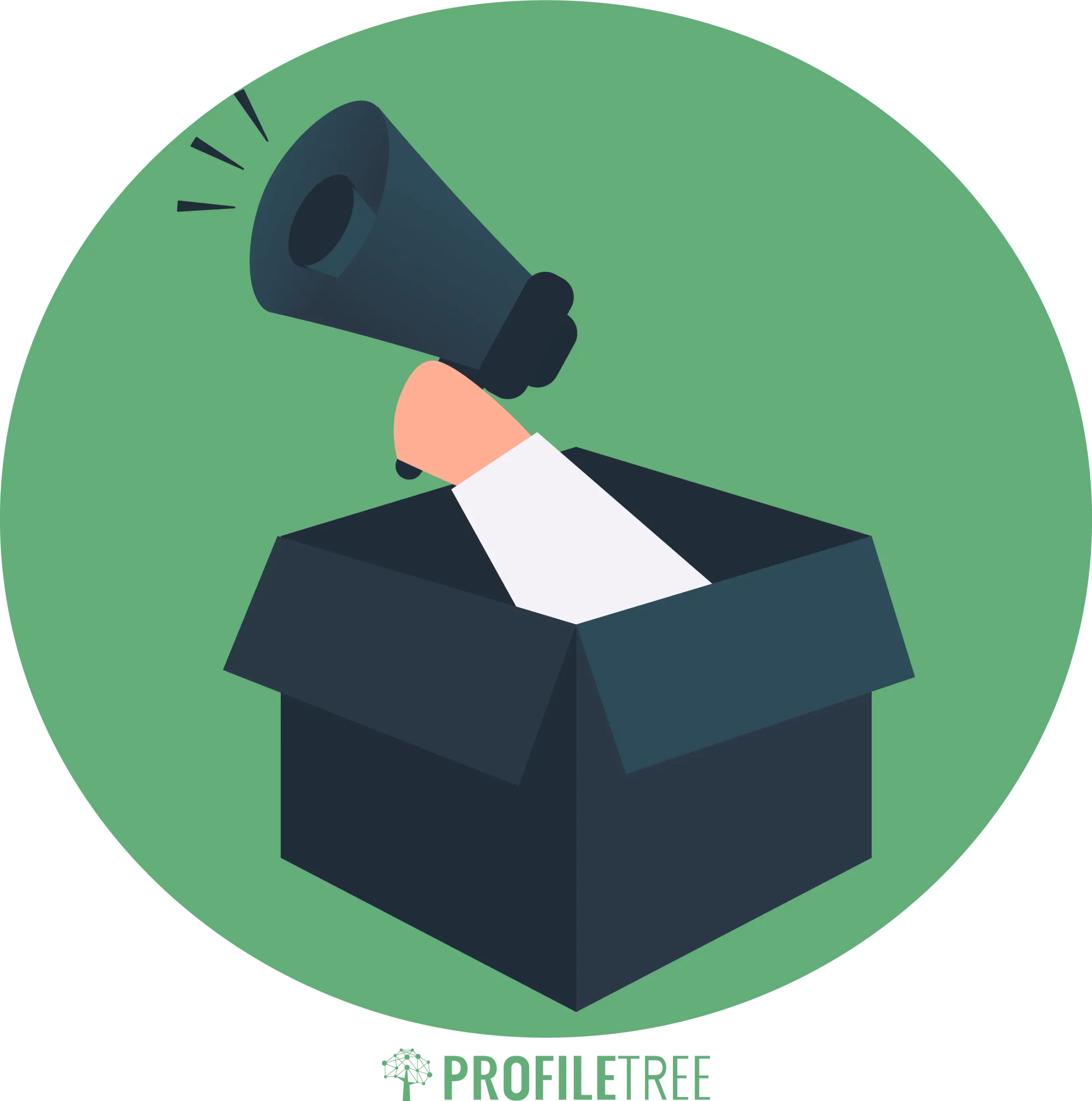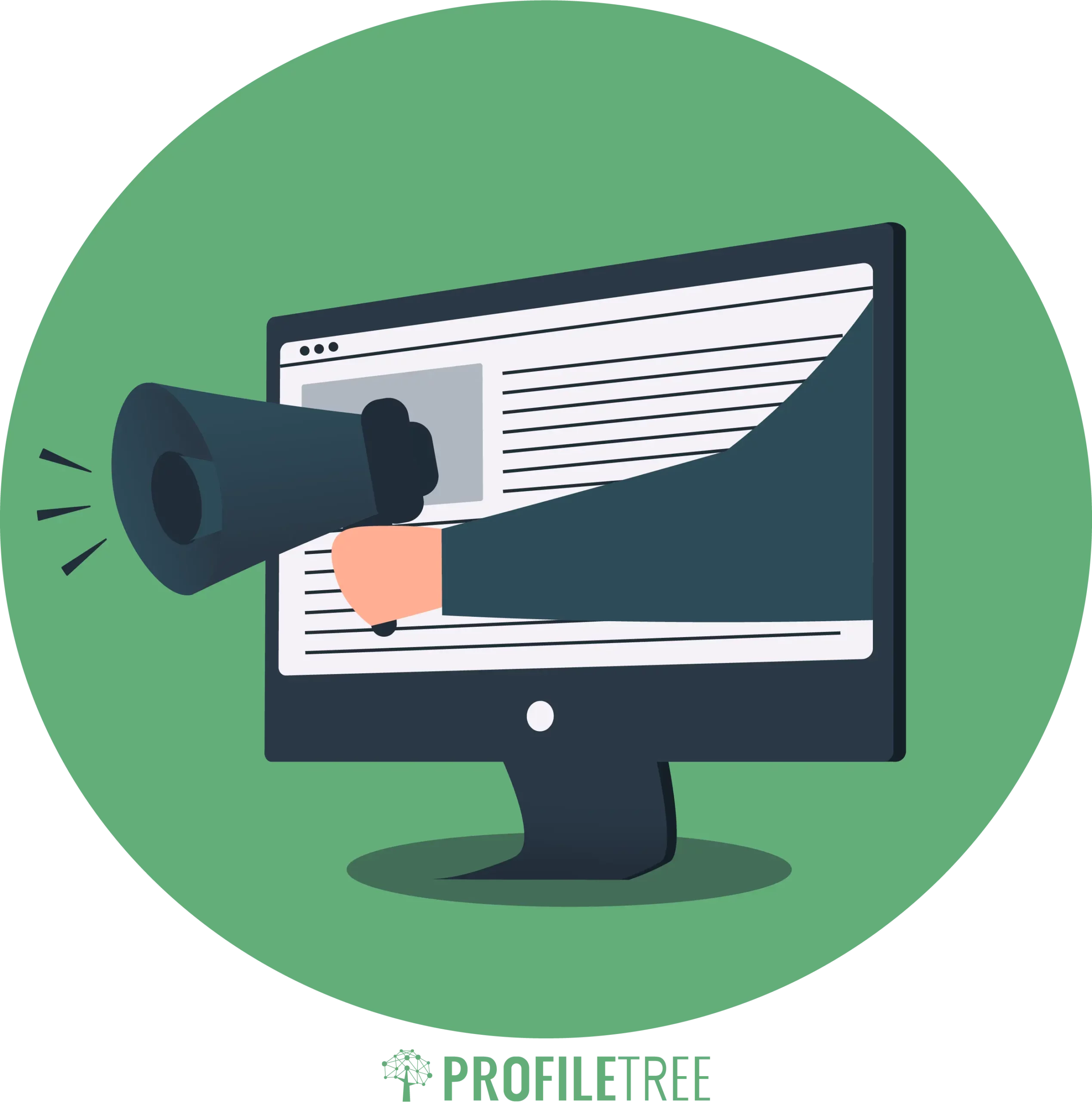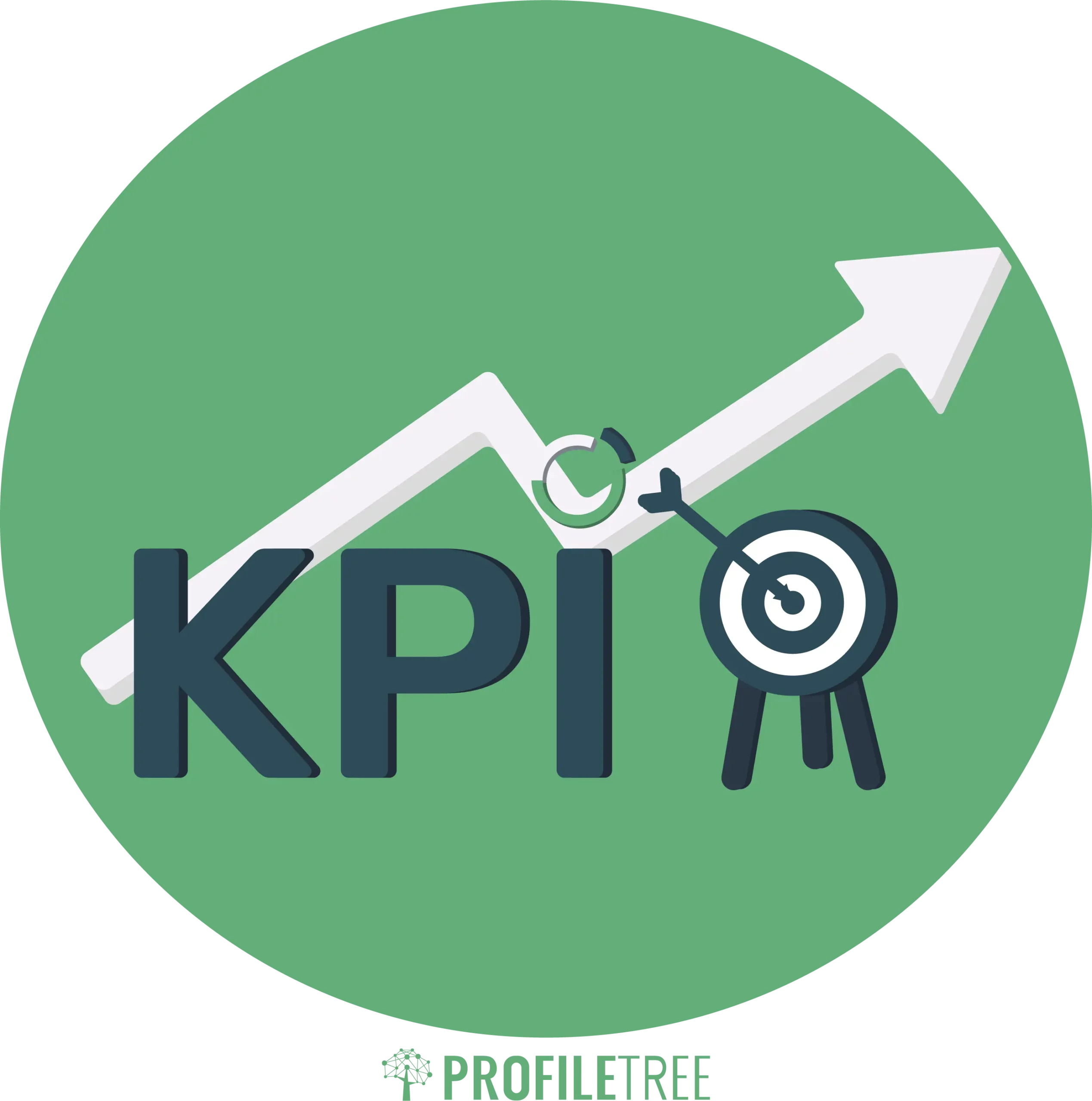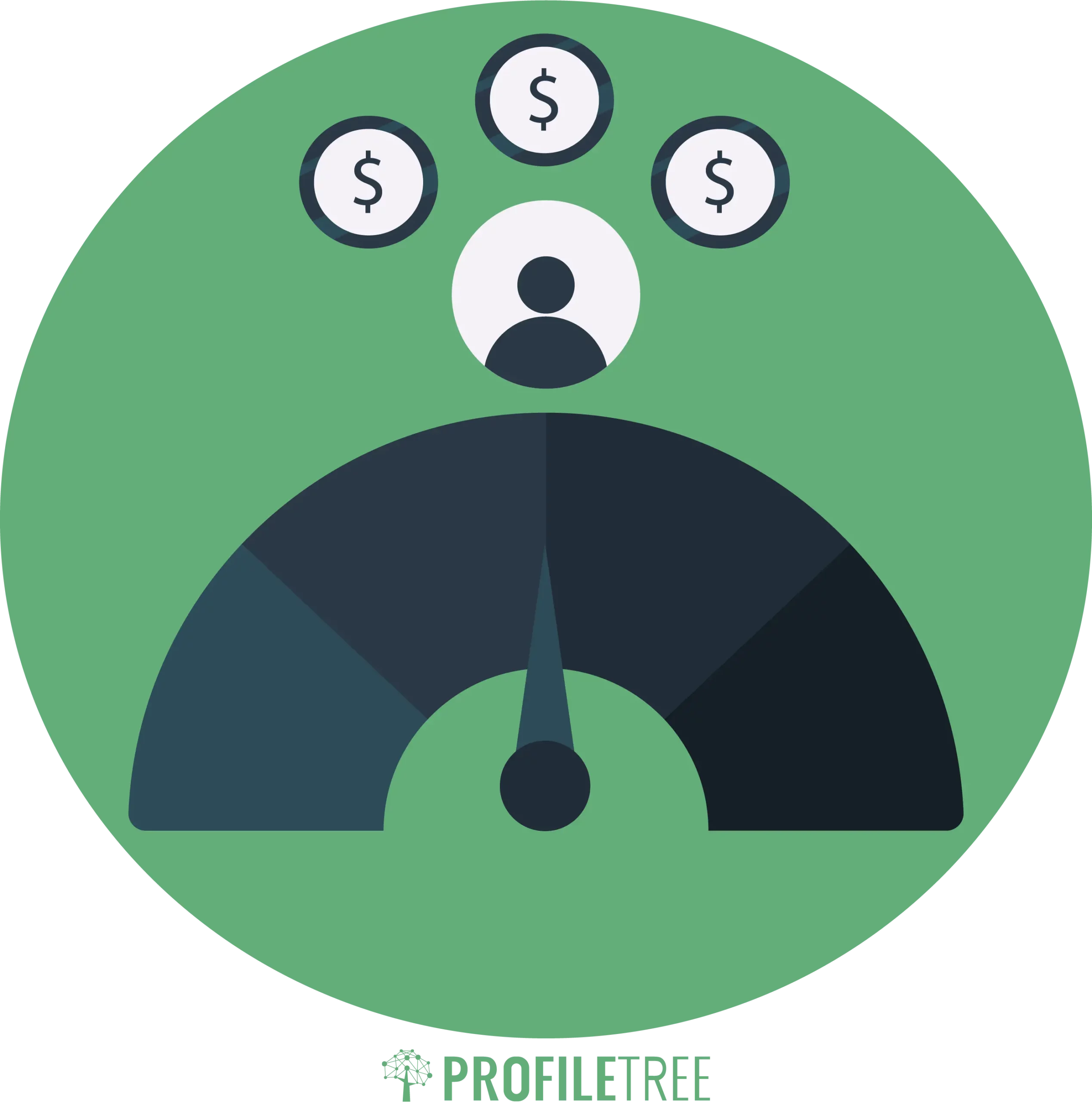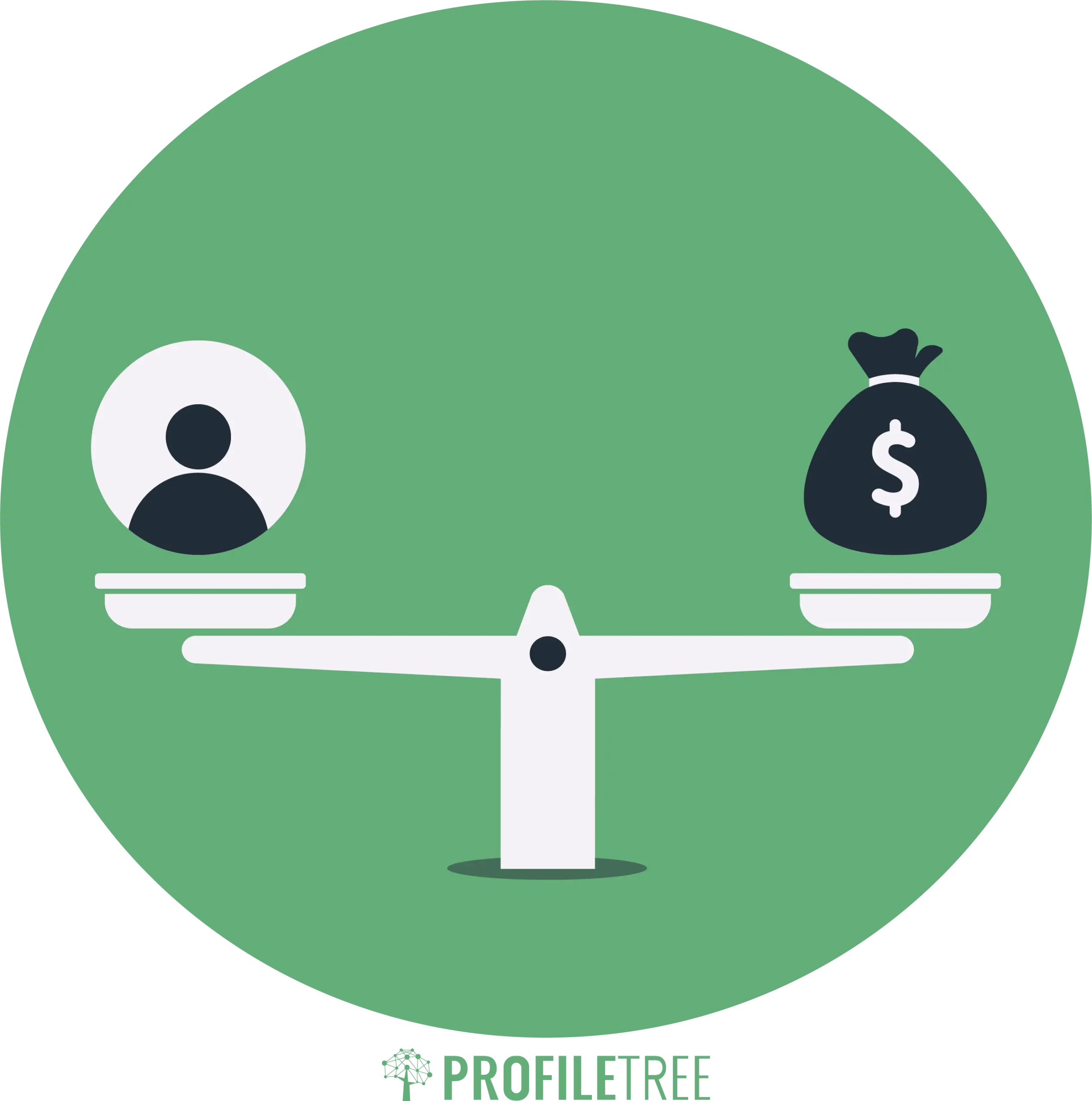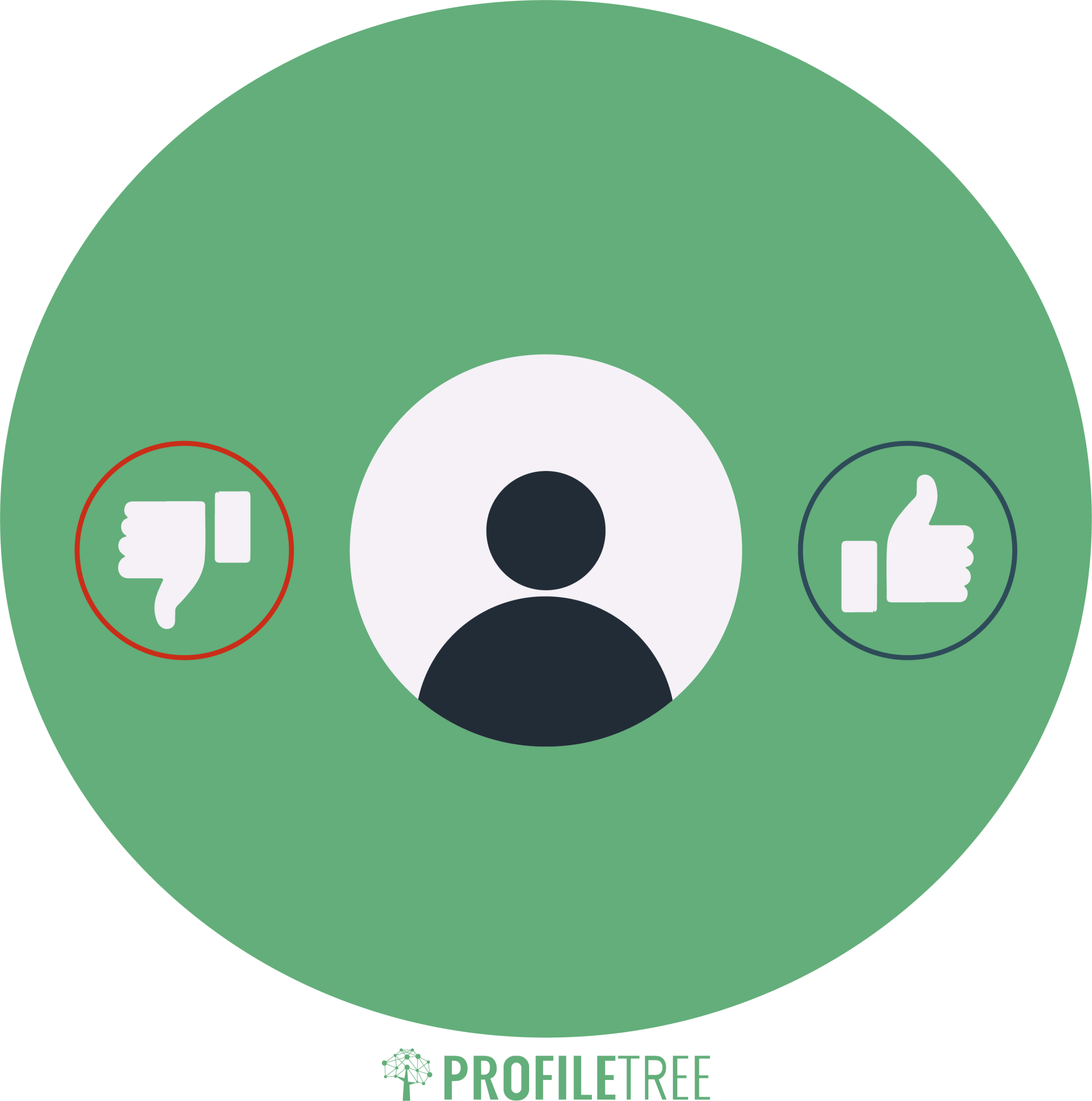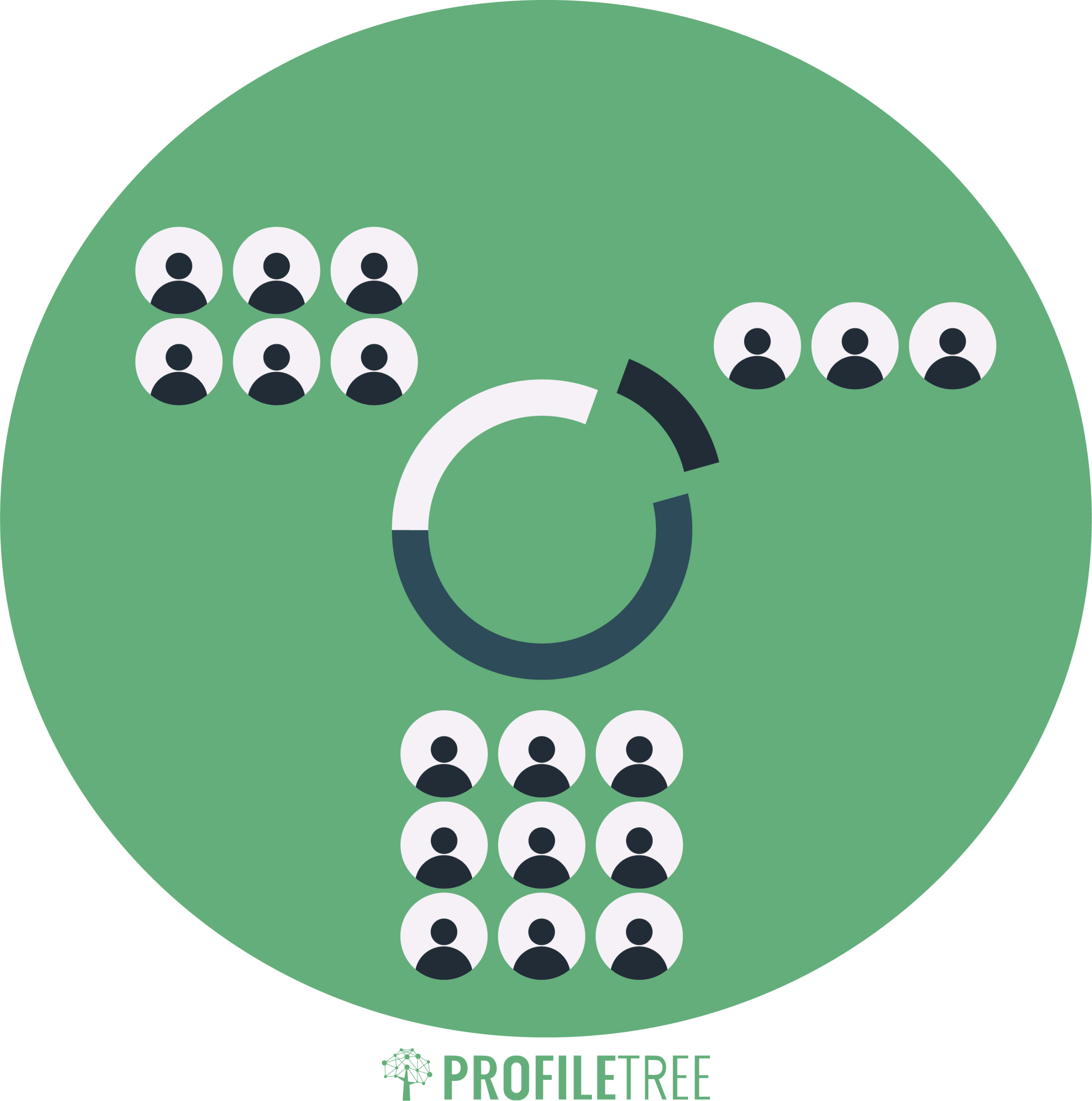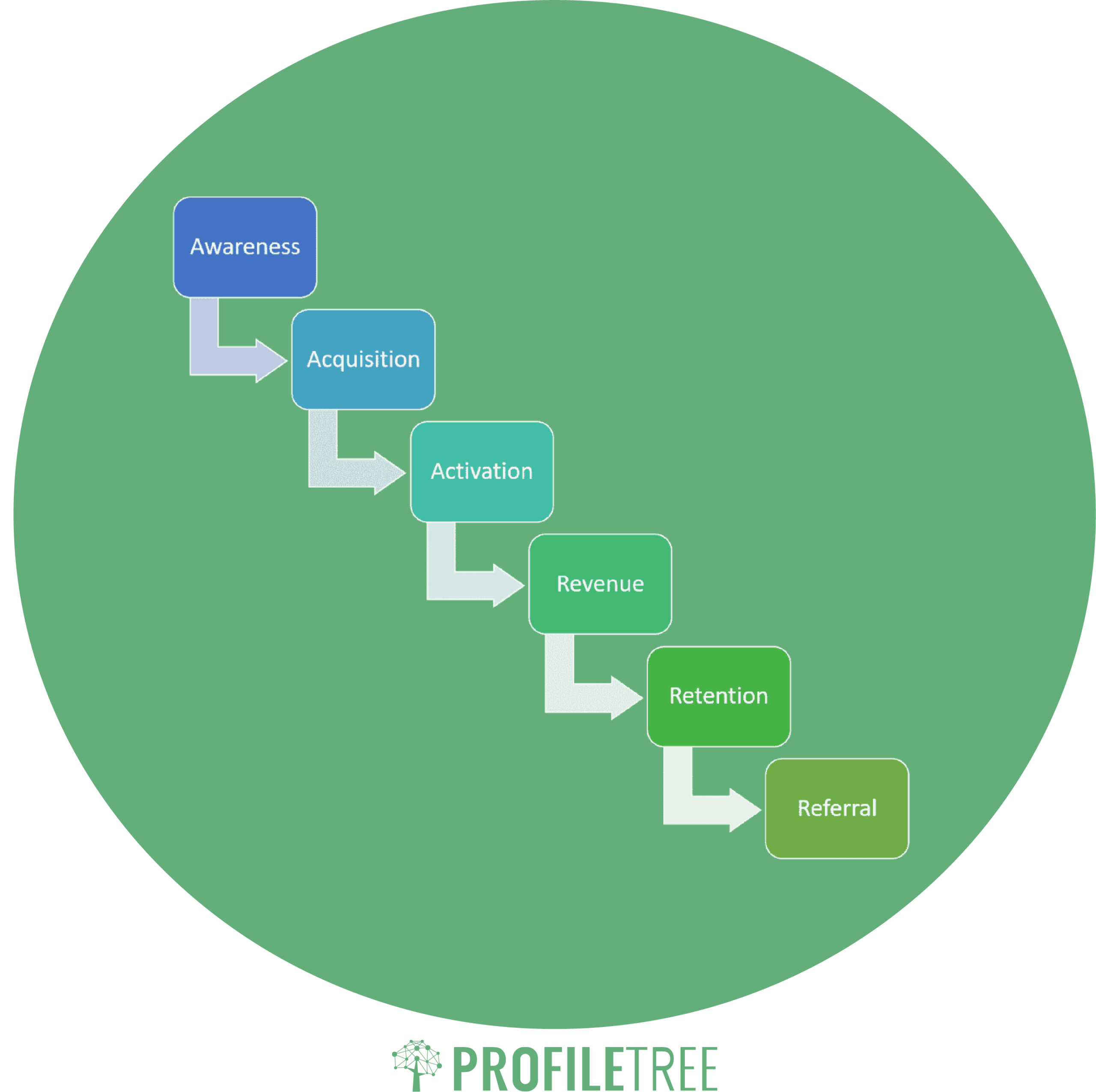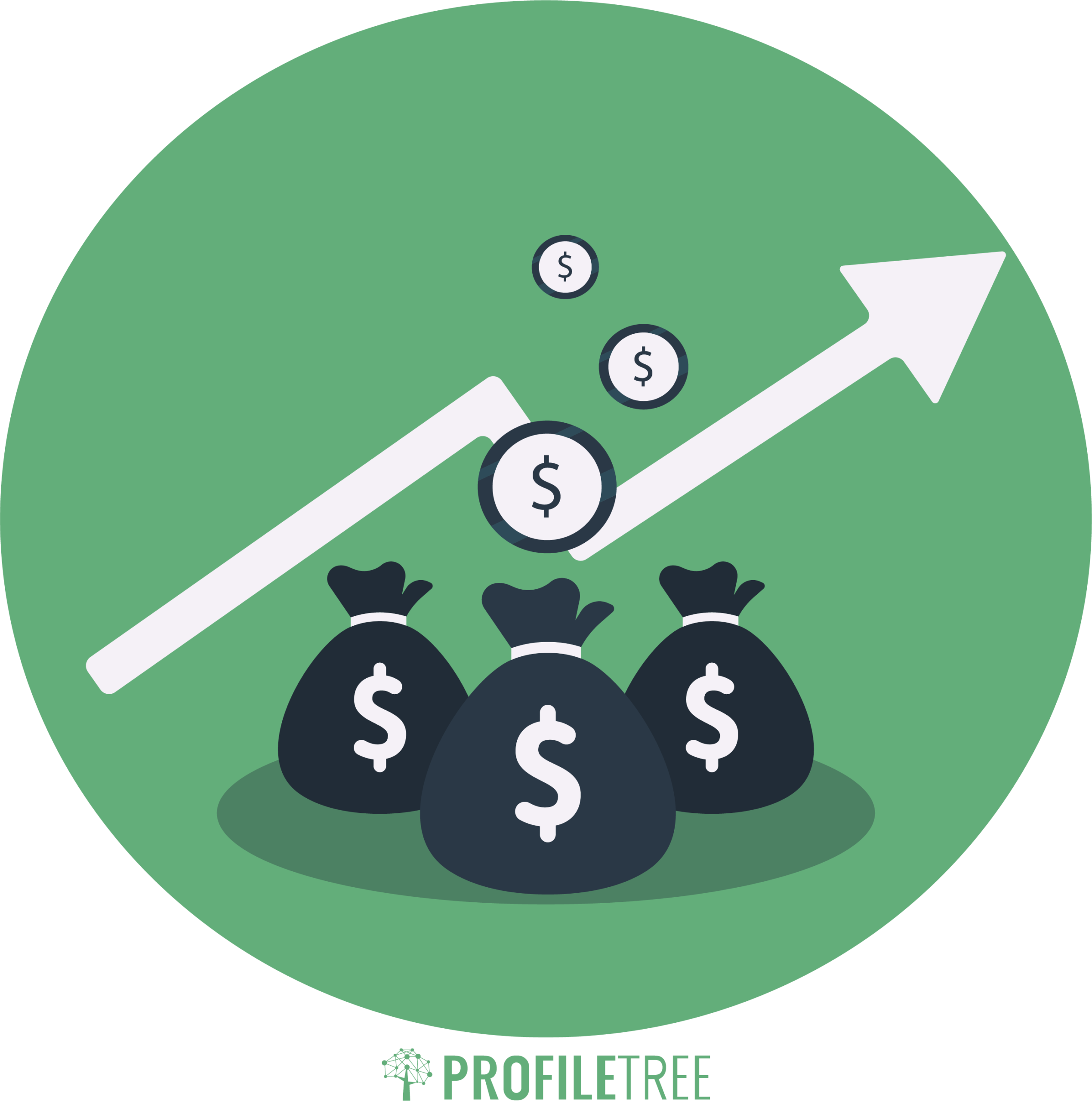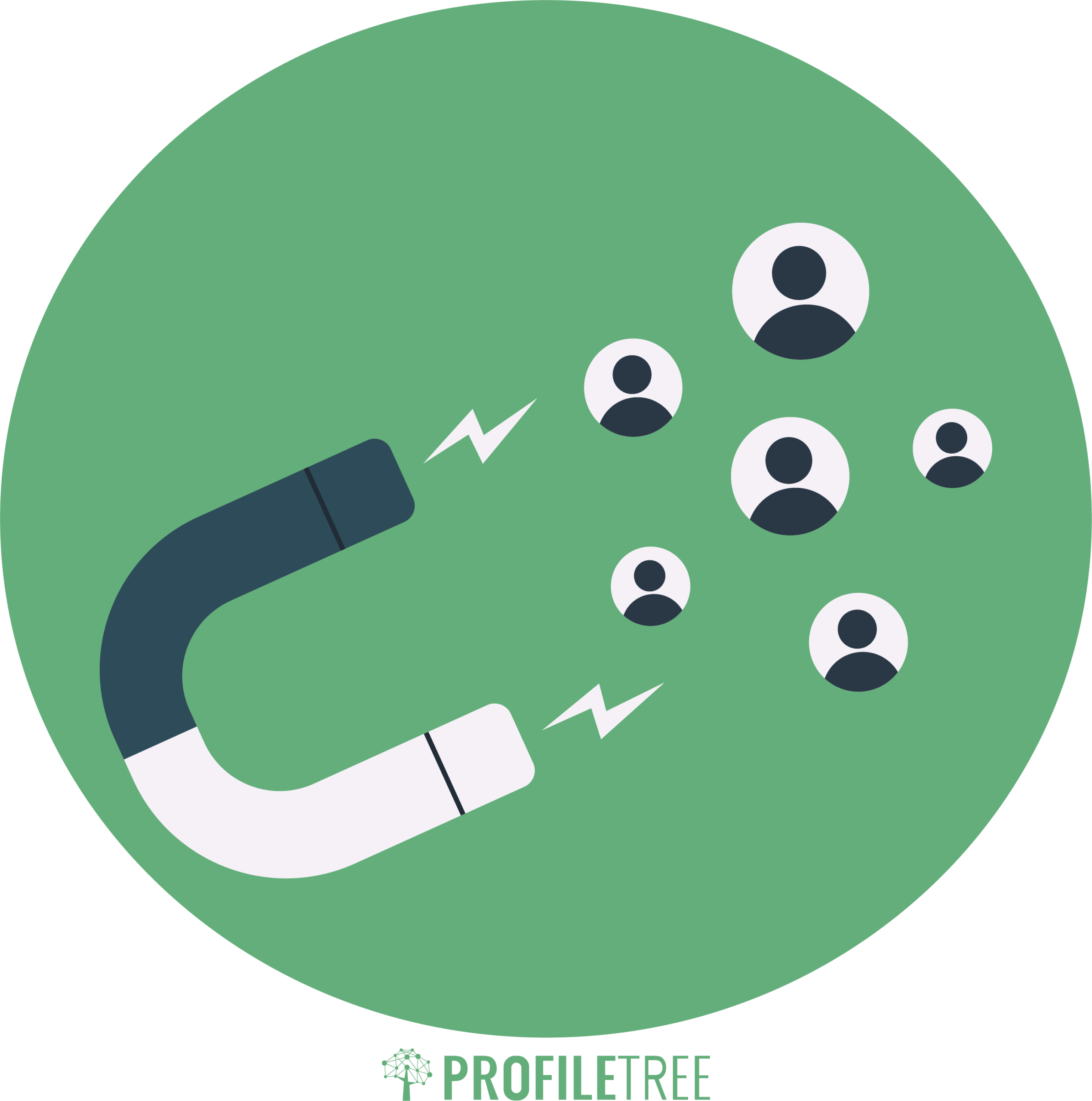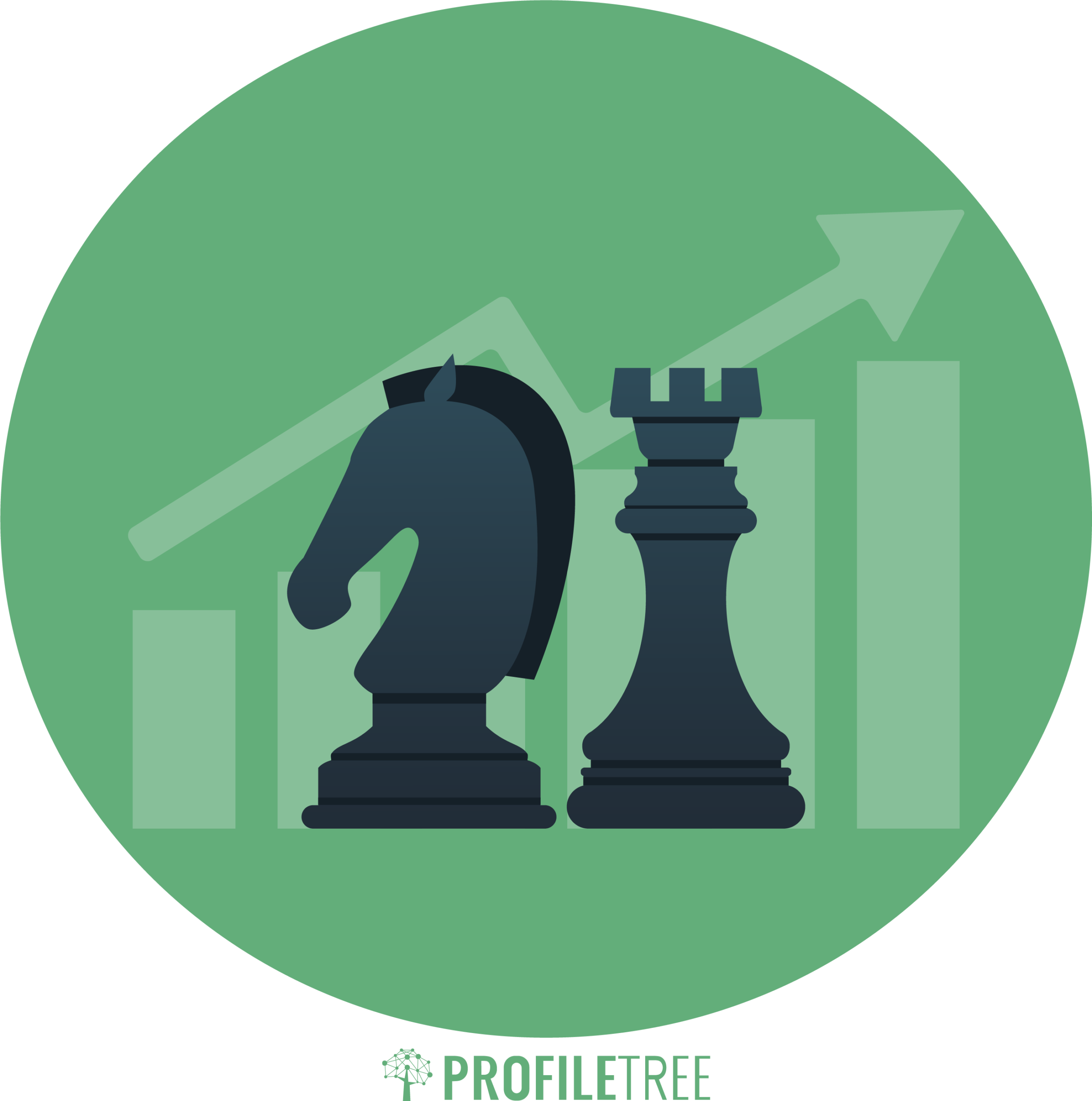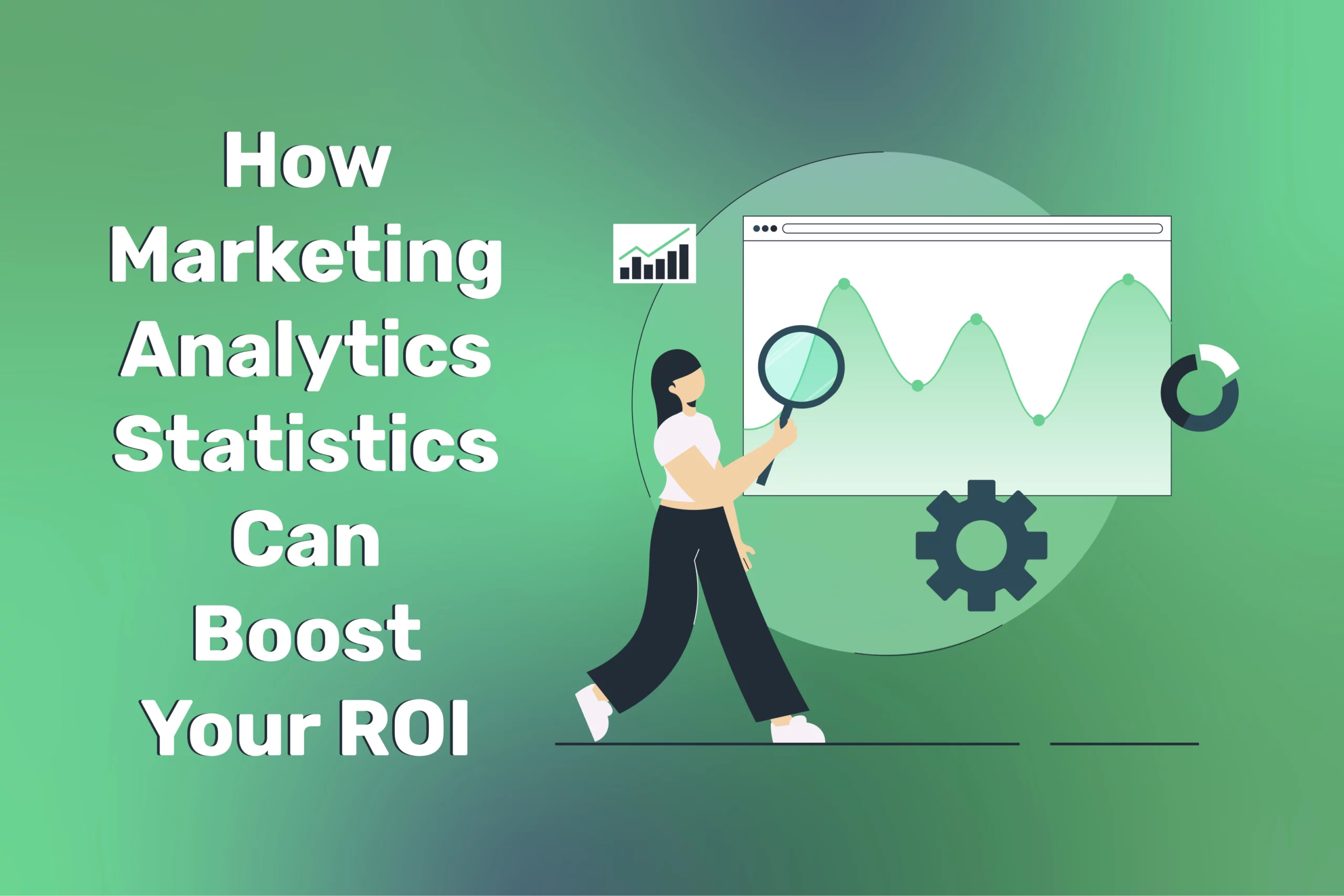Growth Hacking 101: Definition, Best Practices, and Great Examples
In the ever-evolution of marketing, growth hacking has become one of the latest marketing buzzwords. You must’ve come across it somewhere, especially if you’re an entrepreneur or someone who works in the start-up ecosystem. Few concepts have been as polarizing and revolutionary, simultaneously. Many questions are asked when people hear ‘growth hacking’ for the first time. What is growth hacking? Does it have something to do with technology? What does ‘hacking’ refer to? Or, is it a hybrid term that combines both sales and marketing? A new generation of marketers are putting up growth hacking strategies. In what way do these differ from traditional marketing strategies?
All these questions and more are answered here in this intensive outlook on growth hacking.
The Coining of Growth Hacking
The phrase “growth hacker” was coined by Sean Ellis in 2010. Sean Ellis is an entrepreneur, angel investor, and start-up advisor. Ellis had helped many tech companies at Silicon Valley achieve incredible growth. He was the head of marketing at LogMeIn and Uproar and the first marketer at Dropbox, Lookout and Xobni. He would give consultancy to these starting tech companies on setting up systems, processes, and mindsets that could be maintained after he left.
In return for his advice and growth strategies, he used to take equity and payment. When it was time for him to hit the road, Ellis was frustrated when none of the candidates fully understood his job description. Therefore, he felt the need to coin a new phrase.
While he was hiring a replacement for himself, he knew he was looking for marketers. And although many of these marketers were highly competent, they still didn’t really fit in his shoes. He believed that his job was entirely different than the traditional marketer’s job in FMCGs or established companies that have typical products.
The Re-definition of Product
The Internet has created a product concept that did not exist before. In the pre-Internet age, products were physical. The internet has created a radical redefinition of the word product. For thousands of years a product has been a physical good, but now they are invisible bits and bytes in the form of software products. Think of Uber, Dropbox, or Facebook. These are all examples of hybrids; they are half service, half product.
Although these brands have great equity, their marketing doesn’t exactly follow the traditional four marketing Ps. In other words, these brands deal with partnerships instead of distribution. They don’t have product features or size; they have a virtual user experience.
That virtual product, if one can call it that, has some special qualities that regular products do not possess. For instance, the user may get more by sharing it. For example, Facebook encourages you to share their content with your friends. Uber encourages you to share rides to get discounts. So, you benefit when you share the virtual product. This isn’t the case with a shampoo or a toothpaste.
Start-ups in general, and technology start-ups in specific, do not need someone who can build and manage a marketing team, or manage outside vendors or even achieve corporate objectives. In the early phases of building a start-up, there’s only one objective: growth.
A start-up’s one and only strategy is to grow their database of users by encouraging more people to take the risk and try the new product. You need users to tell their friends about the product, and their friends would tell their friends till it goes viral. Of course, traditional marketers care about growth too, but not to the same extent.
The power of a growth hacker is in their hawk-eyed focus on a singular goal. By ignoring almost everything, they can achieve the one task that matters most early on.
What Is Growth Hacking?
So, you now understand why the market needed growth hacking and how the term came to life. Let’s get into a little bit more details on what growth hacking means and try to come up with a definition of it.
Growth hacking is an umbrella term for strategies focused solely on growth. It is usually used in relation to early stage start-ups who need massive growth in a short time on small budgets. There’s no hacking involved in growth hacking; it’s just data-driven marketing being used as a method to optimize demand generation. It is merely the process of designing and conducting experiments to optimize and improve the results of a target area.
Growth hacking strategies mainly fall into three criteria: content marketing, product marketing, and digital advertising. Later, the article would tackle those three strategies in more detail.
The Growth Hacker’s Brain
You’re probably wondering what the qualities that a growth hacker must possess. Apart from the technical qualities which will be covered later, there are three important qualities that a growth hacker needs to have.
Experimental
The heart and soul of growth hacking is experimenting and learning through trial and error. The nature of these start-ups forces this methodology of insane testing and carrying out multiple experiments. That doesn’t come as a surprise. Most of the product concepts that these start-ups offer are innovative, ground-breaking solutions that the market did not know it needed. These start-ups create the product and the need for it. That means that there’s no playbook or a one-size-fits-all guideline for achieving growth.
Therefore, growth hackers have no choice but to learn through experience and learn how to fail, fail better, and then finally reach their target. Successful growth hackers are highly aware that they need to fail many times before they succeed. For that reason, they need to be highly experimental and have excellent planning and organisational skills. Growth hackers don’t just work on plan A, they work on plan A, B, C, and D. They should always have a workaround, or another way to reach the goal based on the observation of previous trials.
Observational and Analytical
Speaking of observation, growth hackers are obsessively curious and analytical. One reason for this is that growth hackers employ digital marketing campaigns most of the time. Digital marketing speaks the language of numbers and trend lines. Other media channels such as the TV, the radio, experiential marketing does not offer the same insights. For instance, outdoor billboards will not provide a report of the number of views or the age of those who saw your billboard.
Digital channels, on the other hand, provide you with detailed insights about the gender, the age, the location, and even how long visitors stayed on the page. There is a huge amount of data that needs to be analysed by growth marketers. Every piece of information empowers growth hackers to make data-driven decisions. That minimises the risk and makes the trial and error process less prone to failure.
Therefore, growth hackers must be comfortable working with numbers and digesting great amounts of information. It’s preferable when a growth hacker has a solid background on statistics. In addition, they need to be able to turn numbers into stories and plot marketing initiatives based on these stories.
Creative
Within an organization, growth marketing is an analytically minded function that focuses more on the data side of marketing than the creative aspects. However, a growth hacker becomes a problem solver by nature.
The nature of these tech start-ups interferes at moulding the brain of the growth hacker. These start-ups offer new solutions in new markets, therefore, most of the problems they face are new problems. And as the saying goes, new problems need new solutions. A growth hacker can’t copy from FMCGs, fashion, or real estate, they must come up with a new way out. For that reason, it would be difficult for someone who prefers to work with a routine to be a growth hacker.
In any of these start-ups, the growth hacker becomes the go-to person for solving any problem that the business encounters. Whether the challenge is relevant to sales, business development, communication, or customer acquisition, they all rely on the growth hacker to align all the initiatives. So, he/she needs to be creative and a fast learner.
Paths to growth are not usually obvious and it takes extreme creativity to find them.
What Is the Difference between Growth Hacking and Digital Marketing?
Digital marketing and growth hacking go hand in hand. However, if you want to put them both in a hierarchy, growth hacking would be the parent.
Growth hackers work across many departments including marketing, sales and product development. They do not limit their responsibilities and they do what it takes to stimulate the growth they need. Rather than trying to make a product/service fit into the needs of the consumer, they are focused on how to push the company to the next level.
Digital marketers are pretty focused and more specific about what they do. Digital marketing plays a huge role in getting the brand in front of the faces of the target audience. It creates a desire for the product/service in question. This is also known as the first step in the sales funnel—Awareness. We’ll tackle that in details later. Digital marketers use content marketing, email marketing, SEO, paid search, etc.
So, in other words, digital marketing complements the work of growth hacking. Digital marketers focus on achieving growth through digital platforms. Meanwhile, growth hackers use digital marketers’ expertise to achieve growth on digital channels. They have their eyes on the growth of the company as a whole; whether it’s the product design, a new feature, a promotion, or a new acquisition.
When Exactly Should an Internet Company Use Growth Hacking?
As you now know what growth hacking is and that it works for specific products. The right question is when do those type of companies use it? Products have lifecycles, just like humans. Products are born, then they grow, they peak, they stabilise, and finally they decline. These are known as the four stages: introduction, growth, maturity and decline.
When introducing a new product to market, you need market research to help make the decisions surrounding where your product will go and how it will get there; who is going to buy it; how much you are going to charge for it; and, most importantly, if anyone is going to want to purchase your product at all.
During the growth stage, organizations will need to begin asking new questions in order to expand as well as examine new competitors, new potential markets and any changes in brand image.
So, if you have a tech product or a start-up, you should start using growth hacking at this point in time.
How Growth Hackers Use Those 3 Magic Ingredients to Achieve Growth
Those three musketeers are the main ingredients of the growth hacking recipe. Most of the growth marketing initiatives fall under one of these three umbrellas: product marketing, content marketing, and digital marketing. Let’s discover what those three strategies mean.
Product Marketing
Product marketing is the point of intersection of product, sales, and marketing. In these Internet companies, different departments are not separated from each other. On the contrary, most of these companies adopt the Agile methodology in their business process. Being Agile means that they advocate breaking silos inside their organisation. In other words, the company acts as one unit.
By enabling the cooperation between different departments, product marketing becomes possible. So, what is product marketing? It’s the process of continuously improving and enhancing the product itself based on the feedback provided by customers and marketers. The ultimate goal of the product enhancement process is achieving more sales and maintaining customer retention and loyalty.
The enhancement process may involve adding new features, creating a seamless customer experience, changing the product’s design and structure, removing an inefficient feature, or even changing the messages and content of the product itself.
Product enhancement for Internet products also involves expanding the offering. The greatest example for product marketing is Facebook. The application you see today looks nothing like the one Zuckerberg started in 2004. To this day, Facebook is still modifying its product features based on users’ behaviour. For example, Facebook is adding a new match-making feature to compete with Tinder, extending its offering as a dating app even though this was never one of their product features.
By continuously improving the experience for users on the platform, Facebook is still able to keep more than two billion monthly active users.
Product marketing is crucial for achieving growth since it’s the core edge that software products have. For physical products, it’s a long, expensive process to make modifications to the product. Meanwhile, when it comes to software products, it’s all about writing code. Although writing code is not a piece of cake, it’s still much easier to make modifications to these kinds of products.
Furthermore, other product marketing techniques relate to making your product more appealing and building the user base. For instance, Uber uses a dual benefit program where each user has a promo code that they can use as an invitation to invite new friends for a ride. Dropbox also used to give users extra space for data when they invite new users. That was one of the most successful growth marketing strategies. That’s what you’d call a true win-win situation. When implementing such strategies, having a well-defined growth marketing strategy template can help you systematically plan and execute initiatives that drive user acquisition and engagement while creating mutual benefits for both your business and its users.
Internet companies use techniques such as leveraging the fear of missing out by using an invite-only signup system, gamifying the user on-boarding process to make it more enjoyable and offering rewards.
Content marketing is the way to get the word out about most Internet products. Content engages the target audience and creates brand awareness. It keeps your audience and users waiting for added value. Typical content marketing activities include:
- Starting a blog and creating valuable, shareable content
- Guest blogging
- Creating social media content
- Writing e-books and white papers
- Podcasting
- Running webinars
- Running contests and giveaways
- Reviews and testimonials by users and/or influencers
- Joining relevant forums, groups and sub-reddits
- Influencer marketing
- Affiliate marketing
- Using email marketing to build a stronger connection with users
- Improving content visibility with SEO
- Getting listed in relevant marketplaces and sites
Content marketing is a powerful tool to use in a world where traditional advertising with the average sales pitch no longer works. Customers are looking for experience and added value. The power of content marketing lies in its ability to attract people. Users are looking for good content everywhere. Therefore, by providing valuable and creative content, you establish your brand as a thought leader. That sense of authority is crucial for tech start-ups. It’s one way to build a bridge of trust and credibility between you and your potential customers. They look up to your brand as a friend or a consultant rather than a business that only caters for its own profit.
Digital Marketing
Since target consumers of Internet products must be users of the Internet, digital advertising becomes a no brainer. Growth hacking relies heavily on developing a successful digital media strategy; whether through paid or organic marketing. Paid digital marketing takes many forms such as: search engine advertising, social media advertising on any platform, banner ads on Google Display Network, and many more.
The role of digital marketing in growth hacking is to create brand awareness and disrupt the traditional market. Since Internet products usually offer new solutions to old problems, they must disrupt the traditional way of doing things. Human nature resists change. Users would not easily want to change the way they do things, unless for a very valid reason.
Therefore, digital marketing should play that role. First, by making the brand appealing and relevant to its target audience. Second, by making the target buyer realise the benefit of switching to the new solution. Third, by minimising the risk of that comes with trying something new. For example, many of these companies offer a free trial period or a cash-back policy in case you don’t like the product. They do so to encourage more users to get on board without worrying about the consequences. You’ll see how the process of acquiring customers happens in details in the upcoming sections.
The Growth Hacking Glossary
Prior to digging deep into setting up the growth hacking approach, there are a number of terms that you should understand. Let’s go through them one by one.
Also known as KPIs. A Key Performance Indicator is a measurable value that demonstrates how effectively a company is achieving key business objectives. Organisations use KPIs at multiple levels to evaluate their success at reaching targets.
KPIs play a major role in growth hacking. Since growth hacking is obsessive about testing, there has to be a metric or a standard that one can measure. It makes sense because you must quantify your results in order to get a feel of which tactic works better than the other.
It’s not always an easy task to identify KPIs. Sometimes, it comes naturally like the number of views or click-through rate. Other times, it’s more difficult to know. For example, if you make some changes to the user’s interface, how can you find out if users prefer the new version? What if it looks easier to you but it confuses the user? These are all questions that growth hackers must find an answer to. Therefore, they opt to solutions such as Net Promoter Scores, ratings, etc.
Many of the upcoming terms in this glossary are popular KPIs used in growth hacking.
However, in some cases, growth hackers can’t rely on numbers alone. They need to collect qualitative data as well. Therefore, they may choose to gather this data using personalized surveys, conducting customer interviews, user testing or organizing face-to-face focus groups.
One last thing to mention about KPIs is that they’re only as valuable as the action they inspire. These are not just routine numbers and reports. They must be the catalyst directing your growth hacking initiatives. Moreover, you can’t copy another business’s KPIs. They must be tailored to the nature of your product.
Customer Acquisition Cost (CAC)
CAC is essentially the measure of how much it costs you to acquire a new customer. You can calculate it by adding all marketing, sales and on-boarding expenses, and dividing this by the number of customers you have acquired. For example, if your company spends $1000 dollars and acquires 10 customers, you CAC would be $100.
CAC = Total cost of sales, marketing and on-boarding / # of new customers
Needless to say, this is one of the most important KPIs that almost all growth hackers use. As you would expect, these newly founded tech start-ups are not big on budgets. That’s why, they can’t run on advertising campaigns without calculating the accurate return on investment. Hence, the CAC is a fundamental KPI that growth hackers keep track of.
It’s also useful to calculate the CAC of each channel to optimise your channels accordingly.
Lifetime Value of Customer (LTV)
Customer acquisition cost and lifetime value of customer are strongly related to each other. Trying to estimate the profitability of your business lies in answering one question: are you making more money from your customers than it’s costing you to acquire them?
Lifetime Value of Customer, LTV, is the monetary measure of the long-term worth of your customer. If your LTV is negative it means that your business model is not profitable.
LTV = average revenue per customer (ARPU) x average lifespan of a customer – cost of goods sold (your expenses)
The lifetime value of the customer is the expected amount of money you’ll make on someone throughout their entire lifecycle on your product. If people pay you $300 a month for your product, and stay customers for an average of 2 years, then your LTV is $300 x 24 (months) = $7,200.
Segments come in handy when calculating LTV because you might discover that certain segments of your users have a much higher LTV than other users. This will also affect the CAC that you are willing to pay for those specific segments.
If you don’t have a strong grasp of your CAC and LTV then it is very difficult to use any push tactics for getting traffic. Moreover, you wouldn’t be able to budget for any new initiatives because it is also hard to forecast your financials. That will even have an impact on hiring and the entire performance of the business.
Customer Churn Rate
Churn rate measures how many customers you lost over a particular period of time. For example, if you take the number of customers you lost last month and divide it by the number of customers you had at the beginning of last month, the result is your churn rate.
Many companies consider churn rate as one of their KPIs because it has an effect on LTV (lifetime value). If you decrease your churn rate, your LTV will increase. This is a vitally important measure for Internet companies.
Cohorts and Segments
A cohort is a portion of your users based on when they signed up for your product. Everyone that signed up in January is in the January cohort. Everyone that signed up in February is in the February cohort. So, your customer cohort is the measurement of how your retention is changing over time.
It’s important that you use cohorts because otherwise your data won’t be as clear as it could be. If every month your KPIs are improving for new cohort month over month then things are going in the right direction.
Some people may think of replacing cohorts by calculating the average. This is not a good idea. By calculating the average, your data is being skewed by the good and bad of past cohorts, and you are not seeing how things are currently going with your product as clearly as you should.
In addition, cohorts are a great set of metrics that will link the importance of payback period and churn. For example, you might be interested to know how your churn is doing over the course of a 6, 12, 18 and 24-month cohort.
Segments are like cohorts, but instead of basing the group on signup date, you base the group on other segmenting factors. You might categorize your users into male and female groups, in order to see how they behave differently. You could even break cohorts into segments if this gives you relevant data for your product.
A/B Testing
A/B testing is technique used for conducting experiments. The epitome of a growth hacker’s scientific mindset is A/B testing, also known as Split Testing. To prepare for A/B testing, growth hackers create two similar scenarios with one difference.
In this model, you divide your audience or customer base into two groups, with one acting as a control group. Each group receives a distinct version of your email campaign, landing page, discount offer, or the like, and you carefully track each version’s performance. By looking at the results, you can tweak your strategy as needed, then go on to test another element. The goal of A/B testing is to optimise all practises quickly and avoid any waste of resources.
On a side note, A/B testing is inspired by the Agile Methodology which almost all tech companies employ across all their departments.
Customer Value Management
CVM is a measure of a company’s customers’ view of the perceived value for money delivered relative to that of their competitors’ customers. It is sometimes known as a Customer Value Added (CVA) approach.
This is a valuable metric as it links customers to KPIs by directly measuring the drivers of purchasing behaviour and the impact these have upon delivering KPIs such as market share, profit and loss, recommendation, share of wallet, ROI etc.
The perception of a product or service’s value in the market place can be measured through surveys which ask customers a series of predefined questions. These questions are also asked of the competitors’ customers to establish the equivalent value for competitors’ offers.
A simple calculation gives a ratio score based around a parity score of 1 when comparing your business with the competition. The higher the score above 1 the greater the relative competitive advantage for that company, and as the score falls below 1 the greater the level of competitive weakness.
CV= Perceived worth of your offer/perceived worth of competitive offers
Scores ranging between 0.98-1.02 is also considered parity. However, scores below 0.98 indicate competitive weakness and scores in the range 1.03 to 1.10 indicate competitive advantage. Of course, the award of world class performance is any score greater than 1.10.
Brad Feld’s Rule of 40
Rule of 40% = growth rate + profit = 40%
This simple calculation is used by investors to judge the attractiveness of a SaaS business.
“If you are growing at 20%, you should be generating a profit of 20%. In case you are growing at 40%, you should be generating a 0% profit. If you are growing at 50%, you can lose 10%. If you are doing better than the 40% rule, that’s awesome.” – Brad Feld
Quick Ratio
Quick ratio: = new monthly recurring revenue (MRR) + upsell (upgrade) MRR / churned MRR + downgraded MRR
A quick ratio is another KPI used by investors to quickly assess the financial success and potential of a SaaS business. It is a measurement of how reliably the business can grow recurring revenue while facing churn. For example, if the quick ratio is 4.0, your revenue would grow at four times the rate it is churning.
Viral Coefficient
The viral coefficient is a number that tells you how many new people are brought into your product because of your existing users. Measuring viral effectiveness is a fairly new metric – not used by many companies yet. It allows you to measure the speed and spread of your marketing message. This is a super helpful metric for evaluating your online marketing campaigns.
Viral Coefficient = Current customer base x average # of invitations sent by customers x conversion rate of sent invitations / current customer base.
Any results surpassing 1 means that your company is growing exponentially. If every 50 visitors to your product bring in 100 new visitors, your viral coefficient would be 2.
The phrase ‘Going viral’ is based on an equation. It’s not just a phrase thrown around to describe something that is seemingly everywhere online. A viral coefficient over 1 is a great thing, but even if you are below 1 it’s still a benefit to the company. Going viral should not be your ultimate goal. Therefore, anything above zero means that you are amplifying your product distribution to some degree.
The Growth Hacking Approach
So, if one’s going to call growth hacking a strategy or a marketing process, what are the steps of this process? How can you implement a growth hacking strategy to your business? Let’s find out.
The Customer Journey
To put a growth hacking strategy for your business, you need to put yourself in the customer’s shoes. This is called the customer journey. Everything that the customer sees, feels, smells, deals with, every message or sound, these are all called touchpoints. These small touchpoints form up the entire experience for the user. And it is important to identify essential touchpoints in the customer journey as they form up the entire experience for the user.
So, whether it’s a physical product or a virtual one, every customer walks a journey with a brand or a business where every little detail is considered a touchpoint.
Understanding the AAARRR Framework
In the marketing world, this journey that the customers walk through is called the marketing/sales funnel. It doesn’t matter if the journey is online or offline. However, in this case we’ll focus on the digital funnel. The AAARRR framework is the name given to that marketing funnel.
You need to digest the AAARRR framework in order to define your goals within the growth hacking strategy. First things first, AAARRR stands for the grouping of the six stages aligning with the customer lifecycle. The six stages are: awareness, acquisition, activation, revenue, retention, and referral. Identifying these stages helps growth hackers identify where they should focus their efforts to optimize their marketing and sales efforts.
Awareness
Every interaction before you know who the person is.
Awareness is the brand-building efforts that educate prospects about your brand and solution. This encompasses tactics like social media outreach, SEO-optimized content and top-of-funnel offers. ToFu (top-of-funnel) focuses on a high volume of leads, with an emphasis on not pressuring potential customers by offering relevant information that addresses a need, question or problem they may have.
Awareness metrics include website visits, click-through rate, impressions on social media, dwelling time on page, bounce rate, pages per session, and percentage of new VS returning visitors.
Your journey to find your customers starts at your total market. These are the people who would benefit from your products everywhere. Due to physical restrictions like geography, access to media, and many other barriers, it is unlikely that you will be able to reach everyone who belongs to the {Total Market} set.
In order to create awareness, marketers at this stage will employ a lot of experimentation on social media strategy. They might test what frequency of posts is most effective for driving blog traffic or what kind of content gets the most engagement. Furthermore, content for this stage may include blogs, white papers and e-books. For companies with a bigger budget, it may include outdoor advertising like billboards or on-ground activations.
Acquisition
Lead Capture to Activation
Acquisition is the process around generating leads and acquiring net new customers, whether it’s through gated content, chatbots, a free sign-up or something else. Slack, for instance, acquires users through an email collection form on their home page.
A growth hacker might try and increase the amount of form submissions by experimenting on the messaging, the button orientation and colour or the page orientation. Acquisition metrics include visit-to lead conversion rate, the number of contacts created over a given time period, MQLs and MQLs, email click through rate, CAC and final the average deal cycle.
Increasing the pool of acquired leads is one of the most important stages in the growth marketing funnel. The bigger the pool, the higher the number of conversions will be. Even if the conversion percentage is low or stagnant, increasing the number of leads captured will translate into new sales and conversions and gaining a bigger market share.
The quality of leads is also a big issue at this stage. Although the number of acquisitions is significant, it can be misleading if the leads acquired are not qualified. A qualified lead is someone who, under specific circumstances, would become your customer. Since every lead has a cost, it would be draining to the company’s resources if you get a high number of unqualified leads that don’t end up as profitable customers. For that reason, growth hackers need to study their market so well. They need to understand the brand’s consumers; their needs, their fears, and their willingness to purchase.
Once you begin to interact with the {Interested Goal Seekers} group, your goal should be to engage them; to get the permission to talk to them. This kind of engagement can lead you to persuading them and turn them into a qualified lead.
Activation
Sign-up to paying or non-paying customer; on-boarding
During the Activation phase, you should be wondering “How can I provide a good enough experience for my potential customers?” This phase is all about the ‘Aha moment’ you want to deliver to your visitor. That moment usually comes when people realise the value of your product or service has to offer.
Customers at the activation phase have not finalized their deal yet, however, they are more than half way down the road. They know about your brand and they have checked your website or downloaded your app. You’ve somehow earned their trust, so they’re considering you. They’ve finally understood the value your product/service. They may be comparing you against other providers or measuring the pros and cons of purchasing.
Surely, it’s expected that some customers will dwell in this stage longer than others. Your consumers are different, some of them are risk takers and fast while others may be hesitant or prefer to think thoroughly before buying anything. Therefore, in this case, most growth marketers use techniques such as re-marketing and reminders to move the lead further down the funnel.
Re-marketing, or re-targeting, is the tactic of serving targeted ads to people who have already visited or taken action on your website. For example, if you’re selling home appliances and one consumer searched for ‘washing machines’ on your e-store, then he/she would see banner ads on washing machines when they visit other websites. That brings them back to your website.
On the other hand, some applications use push notifications or emails to remind the consumers of what they’ve left in their cart. Some apps may even provide a promotion with an expiry date to motivate the customer to make the decision faster and make them worry less about the risks.
You should know that it’s much harder to move a lead from Activation stage to Revenue stage than it is to move a lead from Awareness stage to acquisition. The further the customer is down the funnel, the harder it is to move them to the following stage. Therefore, growth hackers pay a lot of attention to optimizing the customer’s experience and their advertising efforts at this stage.
Revenue
Activation to paying customer
Now, your customer at this stage has already gone through the most painful part: making a payment. They’ve probably received your service/product or just about to. This is your moment of truth as a business; the chance to prove that the customer’s investment is worth the service or product received. The benefit you give at this stage should overweigh the pain of making a payment.
Revenue metrics include the average dollar value of your closed deals. Another metric is the monthly recurring revenue (MRR). This refers to how much revenue you can expect to earn on a monthly basis from both new and existing business.
Finally, an important metric is the Annual Recurring Revenue (ARR). In other words, the amount of revenue you can expect to earn on a yearly basis from both new and existing business.
Retention
Customer
During the Retention phase, you should be wondering “How can I keep potential customers coming back to me?” This phase is about turning users into returning users. If a customer has subscribed to your product or service, how can they remain subscribed? If they don’t, this counts as a churn. Your priority in Retention is to make the churn rate lower than your customer acquisition rate. Otherwise, growth can’t be achieved.
The key to impressing customers in the digital age is customisation. Customising the experience for each customer helps you create a unique brand experience that the customer would want to come back to. Receiving the product or the service is the defining point for this stage. This moment is when the strongest emotional bond is formed between the buyer and the brand. All the touchpoints before receiving the product leads to that moment.
Therefore, growth hackers must dedicate some time thinking how to offer the best experience to the buyer particularly at the point of purchase. After that comes customer care or what many Internet companies now call ‘customer happiness’. Amazon is a leader in that area. They’ve always been centralising the entire brand around customising the customer experience and it’s one of their secret ingredients for success. Meanwhile, many virtual products use the rating system in order to ensure the user’s satisfaction every time they use the service.
Retention metrics include customer lifetime value; the average amount of revenue you receive per customer over the entirety of your engagement with them. Moreover, there are the two opposite metrics: retention rate and churn rate. Retention rate is the percentage of customers who stay with your company over a given time period. Payback period is the amount of time taken to recover the cost of acquiring a new customer. Of course, other metrics such as product usage and customer satisfaction surveys come naturally.
Referral
Customer to evangelist
If your customers refer your business to their friends or write a good review on your service online, you can call your strategy a success. Understanding the psychology behind word of mouth marketing gives the growth hacker a clear view on what motivates a customer to become a brand evangelist.
Users love to tell their friends and family about products, services, and bargains that they were happy with. First of all, we humans love showing off our right choices; it makes other people perceive us as smart. Second, we also like to be perceived as helpful. When you tell a friend about a product that helped you solve a problem, he/she will immediately thank you. For those two reasons, users never refer an ‘average’ product. Because that will make people think they’re average. Nobody wants that. Each one of us wants to be perceived as someone who knows what they’re talking about; an expert that others can come to for advice.
So, in other words, users refer brands either to help or to impress, and sometimes both. Therefore, you must motivate your customers to become evangelists by offering a premium service.
One of the important Referral metrics is the NPS score. The NPS score is measuring the willingness of your customers to recommend your product or service to others. Another metric that you need to keep track of at this stage is social shares. How often do your customers share your content with their network of friends or tag their friends on your content? Finally, keep in mind to track review rates and the number of leads that come from referrals.
Your growth hacking strategy should definitely hold those who become your product’s evangelists high. You must always provide them with perks and benefits that differentiate them and maintain their satisfaction to encourage more and more users to join them.
How to Build a Growth Hacking Strategy?
Your growth hacking strategy is a dynamic vision. It is an iterating process that doesn’t end. That’s why the following steps are not consecutive steps that you will follow or complete once and for all. You will be jumping from one step to the other all the time, and not in chronological order. We’ve separated them into steps just for the sake of organising these thoughts and making them easier to implement.
Step #1: Perfect Your Product
Focusing on your perfecting your product is an ultimate goal of the growth hacking strategy. It’s a long term process that you need to be going back to all the time. Analyse the needs and preferences of your target market and use this data to enhance your product. Growth hackers call this the “product-market fit”. It’s important to make sure your offering is as strong as possible before using it as a catalyst for growth.
Step #2: Set Measurable Goals (KPIs)
You now understand that KPIs are a core part of your growth hacking strategy. We’ve previously defined KPIs for every stage of the funnel, and you know that they should be tailored according to the nature of the business.
A growth hacker’s success lies in defining precise, actionable goals that will feed into the overall goal of growth. This will limit the temptation to broaden your focus and maximises the time you can spend on testing and refining your approach.
Step #3: Define Your Tactics for Every Stage in the AAARRR Framework
This part is the make it or break it part. As a growth hacker, that’s where you should get creative and playful coming up with solutions to serious problems. Tactics can be setting up messages, adjusting promotions and pricing, or enhancing the customer’s experience. At this point, you will need to answer questions.
- What’s the best way to get more people to know about your product?
- How to break the fear of trying something new?
- How to offer the easiest on-boarding process?
- How to engage with your customers more effectively to keep them coming back to you?
- What will lead to the increase of the number of referrals?
- How to turn more users become your brand ambassadors?
- What can be done to prevent users from turning to a competitor?
You’ll find out some successful tactics that growth hackers used to answer these questions at different stages of the funnel.
Analysing the business’s performance is the part where growth hackers show off their skills with numbers and their ability to get insights out of them. Analytics are essential to staying on track with your goals. As you chart your progress, this data can also be used to adjust and adapt other areas of the process accordingly, from your product to your goals.
Step #5: Keep Optimising and Re-visit Your Strategy Every Quarter
Whether this involves implementing an entirely new approach or refining a previous effort, there is value in the “learning-by-doing” concept. Success, like most things, will come with a little bit of patience and practice. Do not let anything that doesn’t work linger, that’s the best part of working with Internet products. It’s a lot easier to experiment, make changes, and learn from your mistakes.
Examples of Successful Growth Hacking Tactics
There are many examples of companies that nailed growth hacking tactics. You’ll learn from the best here and you can find some inspiration in these ideas to come up with something brand new for your business.
AirBnB: Get Featured on Relevant Websites
Although this is has become basic for many businesses now. It still works like magic. While studying your customers’ profiles, you can expect the communities where they often hang around. Whether these communities are online or offline, it’s advantageous to have access to a large pool of target users.
AirBnB is now famous for being the place where you can score affordable accommodation almost anywhere you travel, but in the early days, they needed to build their user base, customer base, and reputation. When the founders realised that people who were looking for alternative accommodation often searched on Craigslist, they had an ‘aha’ moment. They offered an option for AirBnB accommodation providers to copy their listing to Craiglist with one click, verify the information, and post. Now, that’s what one calls a ‘growth hack’.
MasterClass: Cooperate with Industry Experts and Influencers
Many would disagree with this saying that celebrities no longer have credibility, especially among millennials and the younger generations. This new Ed-tech business will change your mind.
MasterClass is a website that brings creative, celebrity-taught classes to the public. The platform has it all. From tennis lessons taught by Serena Williams and photography instruction from Annie Leibovitz to cooking classes by Gordon Ramsay and all the way to scientific thinking by Neil deGrass Tyson. MasterClass’ sales more than doubled from 2016 to 2017 and raised 80 million dollars to expand internationally. That puts the three year old company on pace to match Udacity and Coursera — a pair of Ed-tech heavyweights — in revenue.
If this teaches you one lesson, it’s that cooperating with influencers and celebrities is worthwhile if the cooperation truly adds value to the brand and ultimately to the consumer.
Create a Customised Referral System
Social sharing and refer-a-friend techniques are one of the tried and true growth hacking ideas. There are endless examples of creative and successful referral programs. Two things differentiate the best performing referral programs. First thing is when referral programs offer benefits to both sides; the referred and the referrer. The second thing is simply being creative. People love a new idea that is exciting enough to make them want to share it with others.
The Groupon Way
One of the best companies that come up with world-class referral programs is Groupon. Let’s say you just found a great deal on Groupon. It’s one that you can’t pass up. The only problem that jumps in your way is that not enough people have signed up for the deal – and the deal expires in 2 hours.
You see, it works on the principle that you need enough people to take a deal to GET the deal, so if you don’t share, then everyone potentially misses out, because the deal will expire. It’s a great use of FOMO and urgency techniques in marketing.
Monzo’s Most Creative Referral Program
It’s the ‘queue jumper’ growth hack. We may not like those who cut in line in everyday life, but we sure like knowing we’re beating the people behind us. Mobile-only bank Monzo has used the system to encourage signups and to grow from 0 to 250,000 users within two years. Users could see how many people were ahead of them in the queue, and how many were behind. And they could also jump the queue by referring others, driving even more growth.
Creating a free tool is another proven creative growth hack, which has worked very well for HubSpot. HubSpot’s known for giving away free information to help its users, and its website grader tool is another example. One visit to their blog and you’d know that they’re one of the best platforms that capitalise on content marketing.
Besides their remarkable content strategy, creating a tool that helps people evaluate their sites gets them a lot more traffic. HubSpot’s website grader evaluates SEO friendliness, mobile friendliness, and speed, so users can optimise their own websites. And since you have to sign up to get your site report, it also helps build HubSpot’s email list. In 2015, the company’s founder credited the website grader tool as a key part of growing the company to 15,000 users and a $1.6 billion market value.
There are endless ideas for useful tools. You have to choose one that relates to your business. It can be a carbs calculator, a tracking app, a converter or an analyser. The tool should be easy to use and solves a problem instantly.
Set Up Automated Email/Texts Workflows
This technique is particularly useful for e-commerce and retail businesses. Many focus on the fact that e-commerce is taking the world by storm because of its functionality. Of course, people love to buy online because it’s easier and time saving. However, there is also a psychological part of it; a part that many online businesses ignore.
There are psychological triggers that make people actually enjoy buying online. For instance, people get so excited when they receive a confirmation email for something they purchased. There’s also certain enjoyment in tracking where the product is at the moment or getting updates on it. The moment when people receive a product at their doorstep, they get the same feeling when they receive a gift.
These little moments that form the online shopping experience are moments that retailers can use to give the consumer a one of a kind shopping experience. Automated emails and texts play a great role that keeps consumers engaged and reassures them. But more importantly, it shows the consumer what you stand for and how much you’re willing to go with customer care.
TunnelBear: Hands Down, the Award of Best Email Marketing Strategy
TunnelBear is the world’s easiest to use VPN (virtual private network) for both consumers and teams. It can be used to protect you and your privacy, hide your real IP address, bypass Internet censorship, and to experience the Internet as users in other countries.
By making the most of storytelling, TunnelBear comes up with the best automated emails that really put a smile on your face and keeps you waiting for more. From the very first verification email, to special season emails, and all the in-between. Take a look at these amazing examples!
Using Exclusive Invites like Gmail
Exclusivity plays on our human psychology. Everyone loves to feel special and making a product exclusive makes many people more curious to use it. The fear of missing out (FOMO) is a powerful marketing technique, and if you have a product people really want, they’ll respond to this type of marketing. When Gmail launched, it used an invite-only system to drive growth.
At the time, Gmail offered great email search capabilities, and better email management: in fact, many of the features we now take for granted in every email program. The invite-only growth hack worked so well that Gmail invites were auctioned on eBay.
This growth hack works well with open tools and communities. Therefore, be cautious while using this solution as it may backfire if it doesn’t suit the nature of the product.
Gamification and Rewarding Users that Reach Milestones
Within virtual products, creating a loyalty program is one of the best growth hacking techniques to guarantee customers’ retention. High churn rates and the ‘disloyalty’ of customers in the digital age is one of the painful realities that growth hackers deal with every day. In fact, the growth hacking movement originated from a model based on the loyalty program framework.
Consumers love to feel special. They love to know that the company they pay money to appreciates them. Even if the reward is small, people still feel good when they get something for free as a token of gratitude or in a gamified context. Therefore, giving customers benefits the more they use your product makes them think twice before going to your competitor.
Create a Gamified Reward Program like Twitch
Twitch is a platform for game video streaming. It adapts a lot of gamification techniques, and there are several reward systems. Just a few of these are the Drops – awards you get for just watching shows and thus increasing the engagement of the user. Also, users can become premium members and make money in the game. So they can conquer and change vehicles, skins, characters, and virtual currencies.
Create an Attractive Loyalty Program like Careem
Another good example is from Careem, a UAE based ride-hailing app that Uber has recently acquired. Careem created a loyalty program where riders collect points for every buck they pay to Careem. Riders have the choice to use these points whether to give back to the community or take free rides; their points, their choice. If a user takes 15 rides per month, he/she achieves Gold status and gets 50% more points.
There are really hundreds of growth hacking tools out there. So, it would take a whole new article to go through them one by one. However, let’s mention a few good recommendations for you based on the functions they perform.
For inbound marketing and marketing automation, there’s HubSpot and Adobe Marketo Engage. They are great at launching highly-targeted, automated campaigns across your marketing channels in order to generate more revenue with less manual effort. Meanwhile, MailChimp is the real champion of email marketing. It’s used by the biggest companies, totally trustworthy and easy to use.
When it comes to market research and getting customer feedback, Qualaroo and Typeform are marvellous tools that you can use to create survey questions and make them fit your identity. In addition, they help you gain insights with integrated analysis tools and by revealing hidden trends and patterns.
If you’re looking for a tool that helps with optimising lead and customer acquisition, Zapier and Optimizely are reliable tools for that mission. You can use them to Conduct A/B and multivariate tests on your website without changing the code yourself. Zapier, in particular, is a magic wand that integrates different apps and automates tedious tasks. It makes it possible for nearly anyone to do a job that traditionally requires developers.
Growth Hacking 101 Bottom Line
So, if you reached this paragraph, it means you have gained a lot of understanding on what growth hacking is and how it differs from traditional marketing. The era of SaaS companies and virtual products has re-defined ‘product’. Consequently, it twisted the typical role of the traditional marketer. Growth hacking is definitely a transformational marketing methodology for tech start-ups, SaaS companies, or any online business. The role of growth hackers is fun and diverse; it has a lot of testing, analysis, and drops of creativity. If done right, your growth hacking strategy will revolutionise the numbers of your business!
See Also: What Is Business Risk Management?
